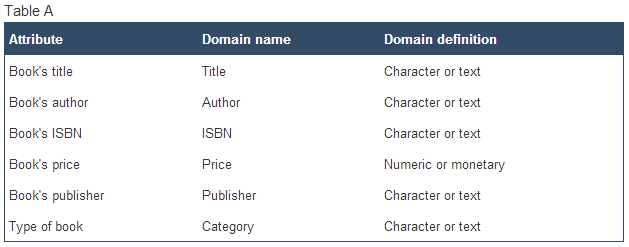Relational Database Theory was created in 1970 by IBM employee Edgar F. Codd. It is currently the most common type of database, and is something that everyone is familiar with. Relational databases are databases which use tables to store data, and create relationships between data items based on the items' values. They are created using a special computer language, structured query language (SQL).
Prior to 1970, databases were "flat," meaning that they stored information in one long text file (called a tab delimited file). These databases stored data as a text file with each entry containing multiple pieces of information about a particular subject. An example of a file created by a flat database would be:
Lname, FName, Age, Salary|Smith, John, 35, $280|Doe, Jane, 28, $325|Brown, Scott, 41, $265|Howard, Shemp, 48, $359|Taylor, Tom, 22, $250
These databases made sorting information difficult, and were typically very large and difficult to use. Retrieving information often required trained computer specialists, and could be an expensive and time consuming process. Codd wrote a paper called "A Relational Model of Data for Large Shared Data Banks" outlining his revolutionary relational database theory which greatly simplified databases and made it possible for almost anyone to use databases.
The result of Codd's work was a data model that represents data in the form of relations. Relations are represented by tables that store information with rows and columns, with elements that can be combined and sorted based on user inputs. Below is an example of a relation that stores data about books:
Relational databases are improvements upon older style databases in a number of ways. They are easier to use, and allow everyday people to utilize databases without training or equipment. Relational databases also are visually more organized and easier to sort through for users. They eliminate redundant data and reduce errors in reducing the amount of times that users must enter data.
In terms of intelligent building design, relational databases are important for the reasons listed above. They allow anyone to maintain and sort data, which is increasingly important in the era of big data and sensors. Relational databases are the base which allows engineers to start looking at data and determining what information is useful, allowing them to use it for design purposes.
Sources:
Boyce, Ray, Edgar Codd, Donald Chamberlain, Christopher J. Date, and Patricia G. Selinger. "Relational Database." IBM100. IBM, n.d. Web. 08 Feb. 2014. <http://www-03.ibm.com/ibm/history/ibm100/us/en/icons/reldb/>.
What are relational databases?" 23 March 2001. HowStuffWorks.com.
<http://computer.howstuffworks.com/question599.htm> 07 February 2014.
Harkins, Susan. "Relational Databases: The Inspiration behind the Theory." TechRepublic. TechRepublic, 2 Apr. 2003. Web. 08 Feb. 2014. <http://www.techrepublic.com/article/relational-databases-the-inspiration-behind-the-theory/>.
Comments:
Esther's blog: You had a really well written blog. It was interesting to read what you had to say about Microsoft Access because I have never used that program before. Your description of keys and how they work helped me understand relational databases a little bit better; I think that you described the process better than a lot of the sources I looked at online.
Jeremy's blog: Your blog was interesting for me to read because it explained SQL, which was something that came up in what I was reading but was never really explained. The whole idea makes a lot more sense to me now, and it makes sense that there is a standard kind of language for communication between databases. It seems like the language has some issues though, it would be interesting to see if SQL evolves or is replaced at some point in the near future.

Very well done post Steve - beyond the actual substance of the post, I feel as though your post is really well organized and demonstrates that you put in a lot of effort. A lot of times we engineers focus on doing the minimum or enough to satisfy the factor of safety, but I can see you like going above and beyond. The table you incorporated really helped explain how relations work and really amplified your article. Keep up the good work.
ReplyDelete